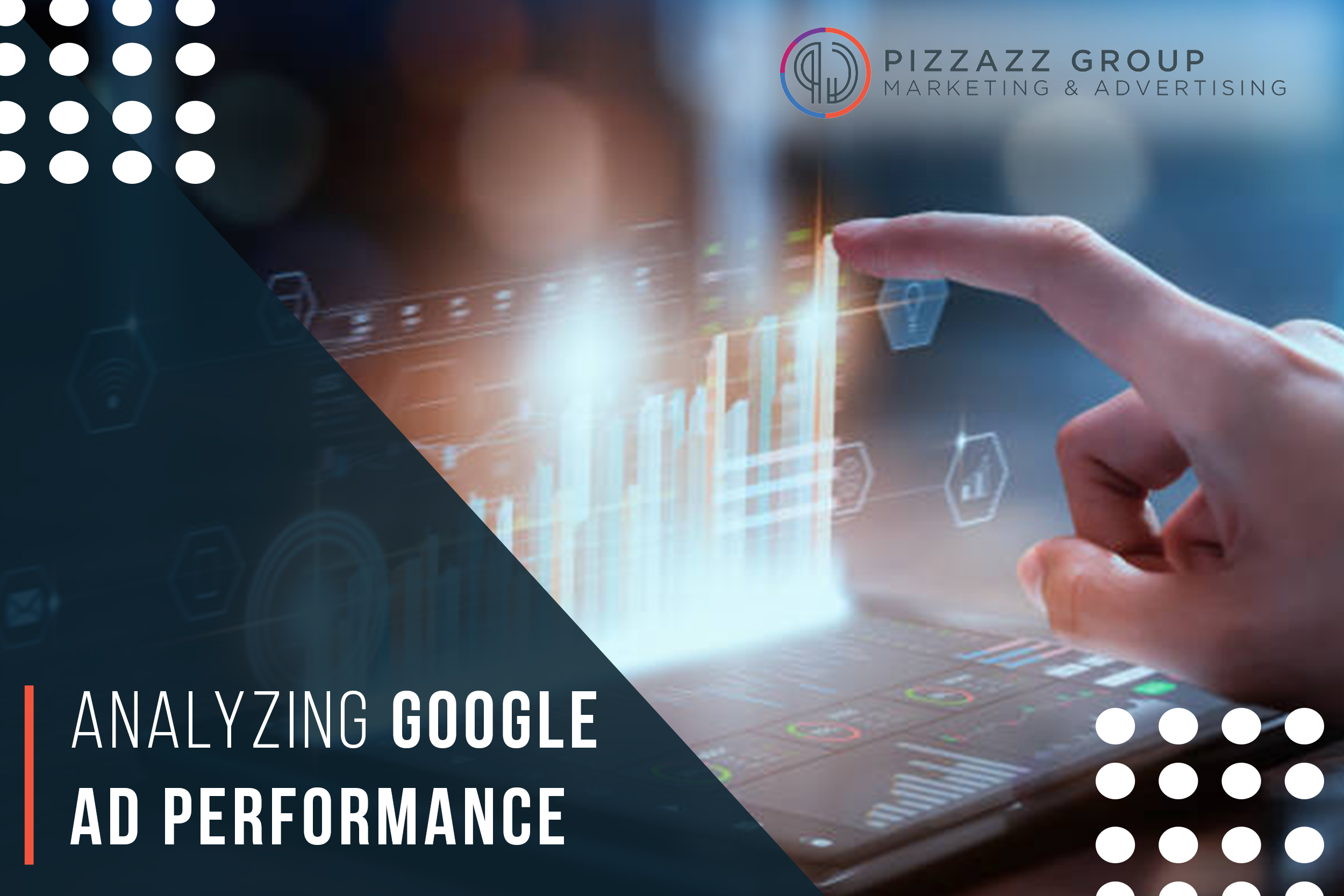
Key Metrics to Analyze
Key Metrics to Analyze

1. Click-Through Rate (CTR): CTR measures the percentage of users who click on your ad after seeing it. A high CTR indicates that your ad is relevant and compelling to users.
2. Conversion Rate: Conversion rate tracks the percentage of users who complete a desired action after clicking on your ad, such as making a purchase, signing up, or filling out a form.
3. Cost-Per-Click (CPC): CPC is the amount you pay each time a user clicks on your ad. It directly impacts your advertising costs and ROI.
4. Quality Score: Quality Score reflects the quality and relevance of your ads, keywords, and landing pages. It influences ad position, CPC, and overall campaign performance.
5. Impression Share: Impression share indicates the percentage of impressions your ads received compared to the total number of impressions they were eligible to receive.
6. Return on Ad Spend (ROAS): ROAS measures the revenue generated for every dollar spent on advertising. It helps evaluate the profitability of your ad campaigns.
7. Cost-Per-Acquisition (CPA): CPA calculates the average cost to acquire a new customer or lead. It’s a critical metric for evaluating campaign efficiency and profitability.
Actionable Insights to Gain from Ad Performance Analysis
1. Identify Top-Performing Keywords: Review which keywords drive the highest CTR, conversions, and ROI. Allocate budget and bid adjustments to prioritize high-performing keywords.
2. Assess Ad Copy Effectiveness: Evaluate the performance of different ad variations, headlines, and CTAs. Identify which messages resonate best with your audience and refine accordingly.
3. Review Device Performance: Analyze how ads perform on different devices (desktop, mobile, tablet). Optimize campaigns based on device-specific behaviors and preferences.
4. Landing Page Analysis: Examine landing page metrics such as bounce rate, time on page, and conversion rate. Ensure landing pages align with ad messaging and user expectations.
5. Competitive Analysis: Monitor competitor ad strategies, including ad copy, offers, and positioning. Identify opportunities to differentiate your ads and capture market share.
6. Geographic Performance: Evaluate ad performance across different geographic locations. Adjust targeting settings and messaging based on regional preferences and market demand.
Optimization Strategies for Improved Ad Performance
1. Improve Ad Relevance and Quality Score
• Keyword Optimization: Use relevant keywords aligned with user search intent. Regularly review and update keyword lists based on performance data.
• Ad Copy Refinement: Craft compelling ad copy that highlights unique selling propositions (USPs) and encourages action. Test different variations to optimize CTR and Quality Score.
• Landing Page Alignment: Ensure landing pages deliver on ad promises and provide a seamless user experience. Optimize for speed, clarity, and conversion goals.
• Audience Insights: Use demographic data, interests, and behaviors to refine audience targeting. Create tailored ad campaigns and messaging for specific audience segments.
• Remarketing Campaigns: Target users who have previously interacted with your website or ads. Tailor messaging to re-engage and convert these potential customers.
• Bid Strategy: Adjust bidding strategies (e.g., manual CPC, automated bidding) based on performance goals and budget constraints. Focus budget on high-converting keywords and campaigns.
• Budget Allocation: Allocate budget effectively across campaigns, ad groups, and keywords. Monitor spend to ensure maximum ROI and avoid overspending on underperforming areas.
• Ad Extensions: Implement sitelink extensions, callout extensions, and structured snippets to enhance ad visibility and provide additional information. Test different extensions to maximize engagement.
• Responsive Search Ads: Use Google’s responsive search ads to automatically test different combinations of headlines and descriptions. Optimize for performance based on real-time data.
• Conversion Tracking: Set up conversion tracking to measure actions that drive business goals, such as purchases, form submissions, or phone calls.
• Smart Goals: Use Google Analytics’ Smart Goals feature to track valuable actions that may not have explicit conversions, such as engaged sessions or scroll depth.
• A/B Testing: Continuously test ad variations, landing pages, and targeting parameters. Measure performance metrics and iterate based on data-driven insights.
• Performance Monitoring: Regularly monitor campaign performance, trends, and anomalies. Adjust strategies in real-time to capitalize on opportunities and mitigate challenges.
Case Studies: Examples of Successful Ad Performance Optimization
• Strategy: Optimized ad copy with specific product benefits and seasonal offers. Implemented sitelink extensions to highlight top-selling categories.
• Results: Increased CTR by 25%, improved Quality Score by 15%, and achieved a 30% higher ROI during peak holiday sales.
2. B2B Software Company
• Results: Achieved a 20% increase in conversion rate, reduced CPA by 25%, and generated higher-quality leads from targeted ad campaigns.
Conclusion
Continuously monitor performance metrics, adapt strategies based on real-time data, and stay ahead of industry trends to maintain competitive advantage. With a data-driven approach to Google Ads, you can refine your advertising efforts, attract qualified traffic, and ultimately drive meaningful conversions for your business.
For more information on Paid Search Advertising (PPC) / Google Ads, contact Pizzazz Group at customer@pizzazzgroup.com or by calling (614) 350-1681.
Related Paid Search Advertising (PPC) / Google Ad Blogs
Website Design Trends: What’s Hot & What’s Not
In the ever-evolving world of web design, keeping up with the latest trends is essential for creating engaging, modern, and user-friendly websites. What was trendy last year might already be outdated, and staying ahead of the curve can significantly impact user...
Choosing A Secure & User Friendly Website Form Builder
In today’s digital world, online forms are essential for websites to collect information from visitors, whether it’s for contact, feedback, registrations, surveys, or e-commerce transactions. A secure and user-friendly website form builder can significantly enhance...
Choosing The Right Hosting Provider For Your Website
Choosing the right hosting provider is a critical decision for any website owner. The hosting provider you select will have a significant impact on your website's performance, security, and reliability. With so many options available, it can be challenging to...





